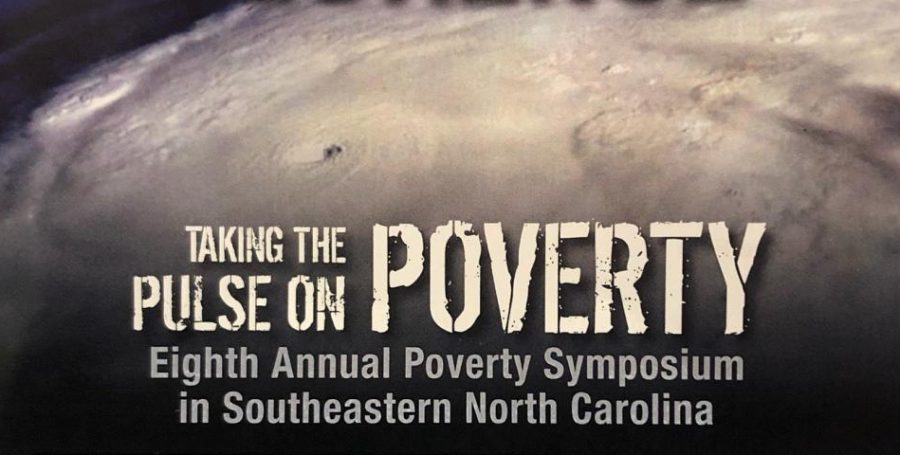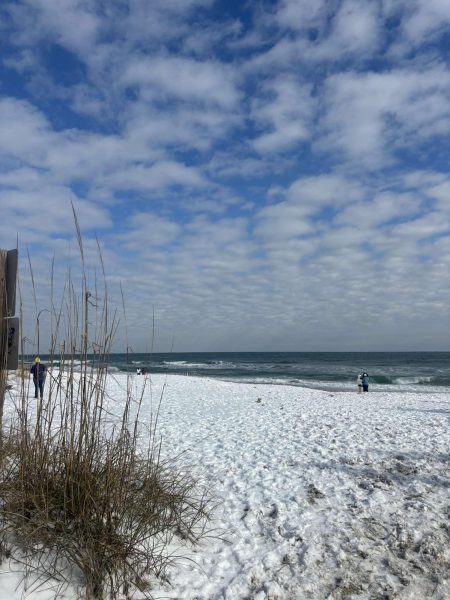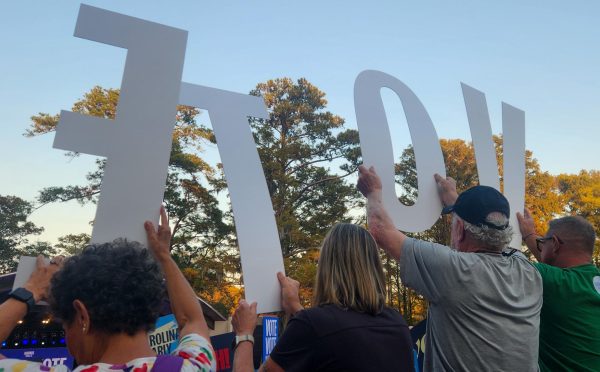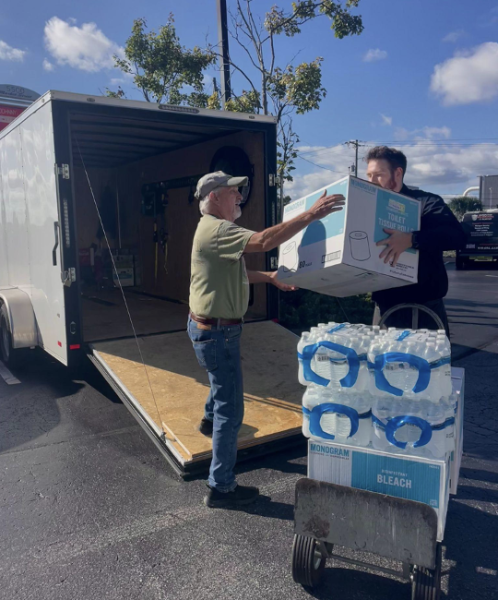Annual poverty symposium examines impact of Hurricane Florence
The eighth annual poverty symposium in southeastern North Carolina, “Taking the Pulse on Poverty,” took place Wednesday in McNeill Hall. Given the events that took place in September, this year’s symposium focused on Hurricane Florence.
“The Disparate Impact of Hurricane Florence” began with a brief introduction given by Jill Waity, assistant professor of sociology at UNCW. She thanked sponsors such as the College of Arts and Sciences, College of Health and Human Services, Watson College of Education, Department of Sociology and Criminology, and the School of Social Work.
She stated that over the past eight years the symposium has tackled issues such as food and security, affordable housing, and affordable transportation.
“Many communities were not being reached with equal pay for food before Florence,” said Jordyn Appel, Feast Down East Community Food Access Coordinator. “The hurricane just exasperated this issue.”
Appel operates and manages the Local Motive Mobile Farmers Market. It operates in ten sites throughout the week in partnership with Wilmington Housing Authority. She also co-owns Centripetal Farms, which focuses on school garden education, technical assistance and small-scale farming in Title I schools and programs.
Appel stated that many of these individuals on a day to day basis have issues accessing transportation. During the hurricane, it took several weeks for transportation to get up and running to get these individuals to safety. In that time many individuals with families and/or disability issues were not able to get out of their homes and to Federal Emergency Management Agency sites.
“These sites carried resources that they needed, such as water, food, and baby supplies,” Appel said.
Feast Down East also works with farmers, and they were dramatically affected.
“Many people don’t realize that a lot of our farmers are migrant workers,” Appell said. “These people were not being reached because there were no resources available in their language.”
She stated that even though their might have been a distribution site that was near them they would not have known. Some of these farmers were still recovering from Hurricane Matthew that hit in 2016.
In the Local Motive Local Farmer’s Market van — that Appel stated she was fortunate to acquire a week before the hurricane hit — over the course of nine days, Feast Down East was able to reach 4,255 individuals.
“The only reason I am able to have that measurable number is by the number of hot and cold meals we were an able source,” Appel said.
They sourced through World Central Kitchen, United Methodist Church, and Foxes Boxes.
“I was fortunate because, in the fall, I teach a service-learning course where students are required to into the community and volunteer,” said Amanda Boomershine, associate professor of Spanish at UNCW. “After the hurricane hit the focus of the course changed.”
Boomershine stated that she was able to adjust student’s hours so that they could help with hurricane recovery. There are just under one million Hispanic people in North Carolina, which makes up about 9% of the state population.
She stated that of those Hispanics living in North Carolina, 60% were born here, and the remaining 40% are immigrants — some could be naturalized or recent arrivals.
Of the Hispanics in New Hanover, 36% are homeowners. The remaining are renting. Displacement of housing was already an issue for the Hispanic population in New Hanover before Florence.
“There were two communities that were shut down that were predominantly Hispanics, the Glen and a mobile home community on Hooker Rd. called Timberland Village,” Boomershine said.
Boomershine stated that a majority of apartments in the Glen were not damaged by the hurricane. Other housing is not affordable for this community. Also, many apartments in New Hanover will not rent to people who are not citizens and/or permanent residents.
“That means they have nowhere to live,” Boomershine said. “There are no new trailer parks coming in.”
There was a lot of fear to reach out for assistance during this disaster, and some were not capable due to limited english proficiency.
“After the hurricane people would be terrified to come out,” Boomershine said. “There would be a Red Cross vehicle sitting outside their mobile home and they would not come out.”
Boomershine and her group of students, colleagues, friends, and community partners came together to help. They drove to areas that they knew were predominantly hispanic and went door to door asking what they needed. Boomershine visited 16 communities daily for the first three weeks, and then weekly after that for ten weeks
“I find it very ironic that the people who are out building, rebuilding, or fixing our community after the hurricane — the people who are helping grow our food on farms — are the same people who have nowhere to live,” Boomershine said.
Beth Schrader, Chief Officer and Hurricane Florence Recovery Manager, stated that almost 6,000 homes were damaged, 1,200 low income apartment units were lost, and 2,200 mobile home parks were significantly damaged.
“That’s a lot of housing,” Schrader said. “In the future, we plan on working more with FEMA and the state programs to get as many homes repaired as possible as quickly as possible.”
Schrader stated that one of the groups that showed up to supply sites in large numbers were our elderly. They were able to accommodate them on the spot to get them into air conditioning so they could wait comfortably for supplies. Fast lanes and gulf carts were used to help this process.
“This was a unprecedented storm,” Schrader said. “The county really came together to do a lot of things that they have never done before.”












